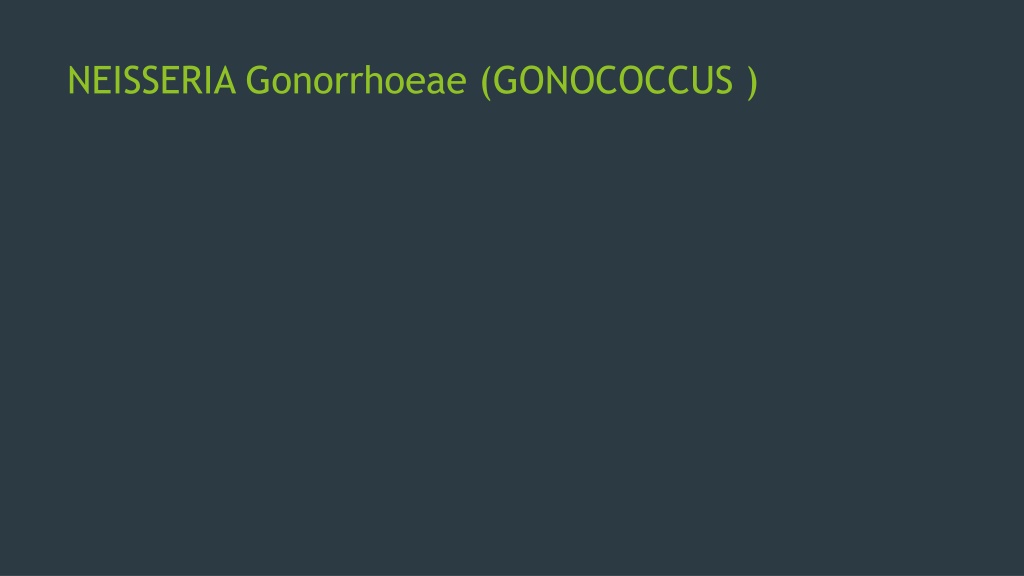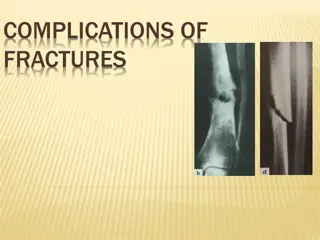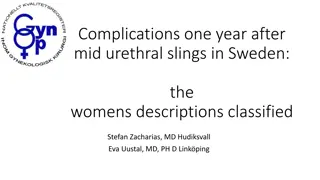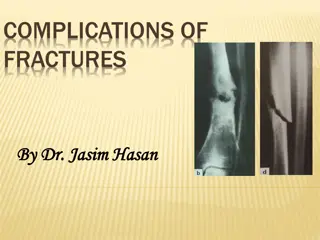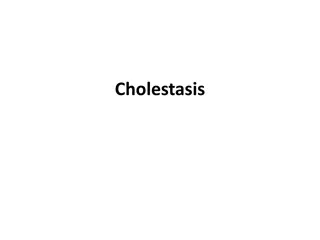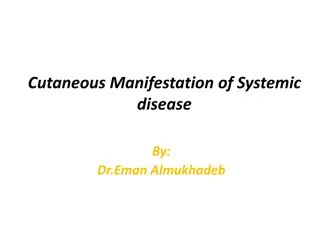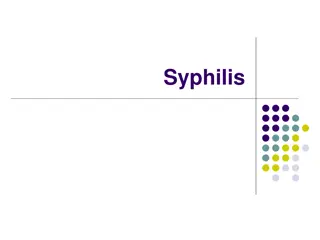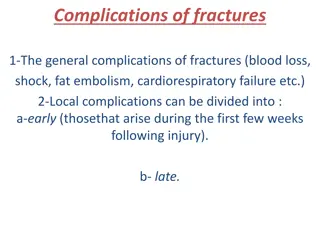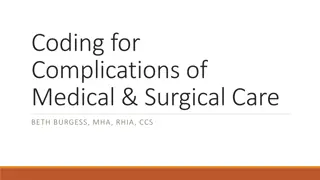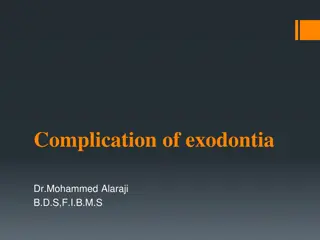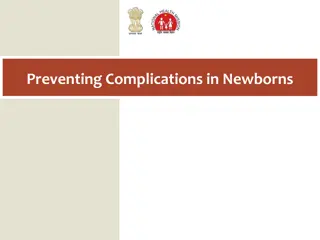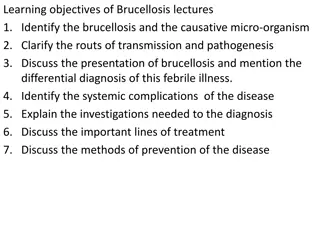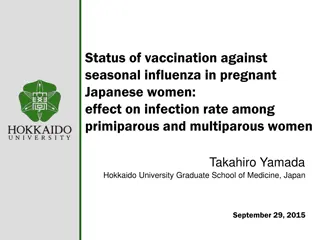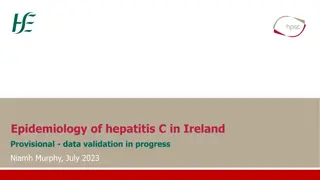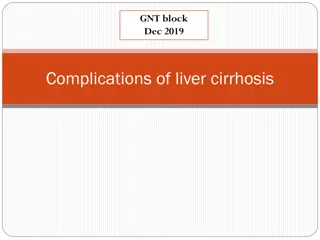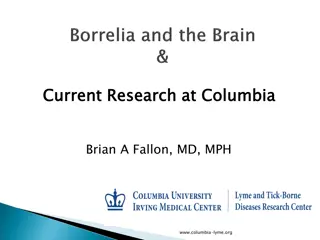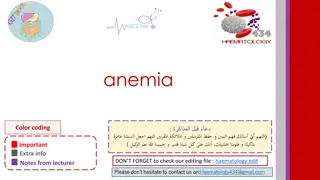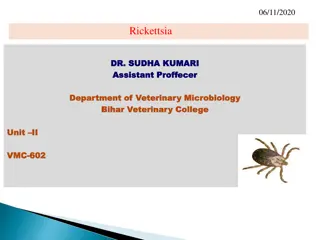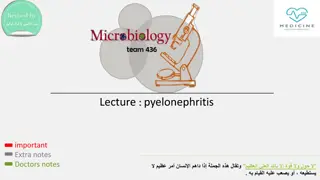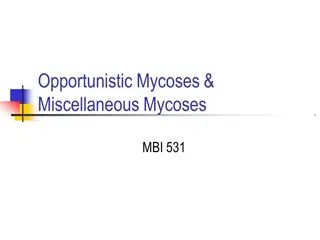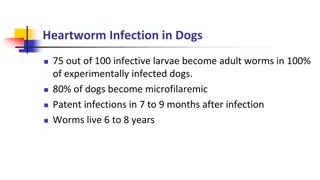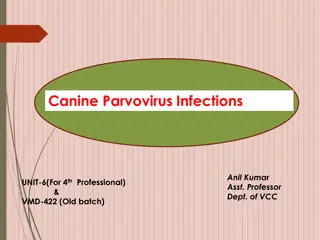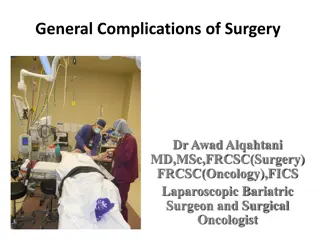Clinical Manifestations and Complications of Neisseria Gonorrhoeae Infection
Neisseria gonorrhoeae, also known as gonococcus, is a bacterial pathogen responsible for gonorrhea. The virulence factors of N. gonorrhoeae include pili/fimbriae for adhesion, outer membrane proteins like Porin for protection, opacity-associated protein for adhesion to neutrophils, and more. Clinical manifestations vary between males and females, with males commonly presenting with acute urethritis and females showing milder symptoms like mucopurulent cervicitis. Complications can include epididymitis, pelvic inflammatory disease, and more. In pregnant women, N. gonorrhoeae can lead to neonatal eye infections. Disseminated gonococcal infection is rare, but can cause polyarthritis and endocarditis.
Download Presentation

Please find below an Image/Link to download the presentation.
The content on the website is provided AS IS for your information and personal use only. It may not be sold, licensed, or shared on other websites without obtaining consent from the author. Download presentation by click this link. If you encounter any issues during the download, it is possible that the publisher has removed the file from their server.
E N D
Presentation Transcript
Virulence Factors Pili or fimbriae - Adhesion to host cells & prevent phagocytosis Outer membrane proteins - Porin (protein I) - >50% of OMP - PorB.1A strains - local and disseminated gonococcal infections - PorB.1B strains- local genital infections only
Virulence Factors Opacity-associated protein (Protein II) - adhesion to neutrophils & other gonococci Transferrin-binding and lactoferrin-binding proteins IgA1 protease - protection from mucosal IgA Lipo-oligosaccharide (LOS) - endotoxic activity.
Clinical Manifestations Gonorrhea Males: Acute urethritis MC manifestation - Purulent urethral discharge ( gonorrhea - flow of seed) - Incubation period is 2 7 days - Complications - epididymitis, prostatitis, balanitis & water-can perineum
Clinical Manifestations Females - Infection is less severe More asymptomatic carriage than males - Mucopurulent cervicitis - MC presentation - Vulvovaginitis in prepubertal girls & postmenopausal women- vagina mucosa thinned out & higher pH - Not in adult females - resistant to gonococcal infection (low pH and thick stratified squamous epithelium)
Clinical Manifestations Spread - Bartholin s gland, endometrium and fallopian tube. Salpingitis and pelvic inflammatory disease sterility Fitz Hugh Curtis syndrome rare - peritonitis & perihepatic inflammation. Both the sexes Anorectal gonorrhea - Pharyngeal gonorrhea - Ocular gonorrhea -
Clinical Manifestations Pregnant women prolonged rupture of the membranes, premature delivery, chorioamnionitis, and sepsis in the infant - Neonates (Ophthalmia neonatorum) - colonized maternal genital flora - Purulent eye discharge within 2 5 days of birth
Clinical Manifestations Disseminated gonococcal infection (DGI) Rarely following gonococcal bacteremia - Polyarthritis and rarely dermatitis & endocarditis - In HIV-infected persons - Nonulcerative gonorrhea
Epidemiology Incidence decreased indeveloped countries Under reporting due to stigma Host - exclusively human disease Source - asymptomatic female carriers or less often patient Transmission sexual contact (venereal) 1. Mother to baby during birth. 2.
Laboratory Diagnosis Specimen Collection - Urethral swab in men and cervical swab in women - Dacron or rayon swabs In chronic urethritis secretion after prostatic massage or morning drop of secretion - Transport Media - Charcoal-coated swabs kept in Stuart s transport medium , Amies medium, JEMBEC or Gono-Pak system
Laboratory Diagnosis Microscopy - Gram-negative intracellular kidney- shaped diplococci - 50% sensitive
Laboratory Diagnosis Culture -Endocervical culture has a sensitivity of 80 90% - Cervical swabs contain normal flora - selective media preferred (Inhibit commensal Neisseria) Thayer Martin medium - Chocolate agar with vancomycin, colistin and nystatin Modified New York City medium - Lysed blood agar and lincomycin, colistin, trimethoprim and amphotericin B Martin Lewis medium.
Laboratory Diagnosis Biochemical Tests - To differentiate gonococci from other commensal Neisseria species Gonococci are catalase and oxidase positive - Ferment only glucose, but not maltose and sucrose. -
Nongonococcal (Nonspecific) urethritis Chronic urethritis where gonococci cannot be demonstrated NGU is more common than gonococcal urethritis. Bacteria: - Chlamydia trachomatis: Most common agent Ureaplasma urealyticum, Mycoplasma hominis - Gonococcal infection, cocci in L forms - Viruses: Herpes simplex virus & Cytomegalovirus Fungi - Candida albicans Parasites - Trichomonas vaginalis
References Textbook of Medical Microbiology by Ananthnarayan, Paniker Textbook of Medical Microbiology by C.P Baweja Textbook of Medical Microbiology by S. Bhat, A.S.Sastry Textbook of Medical Microbiology by D.R.Arora, Brij bala Arora
